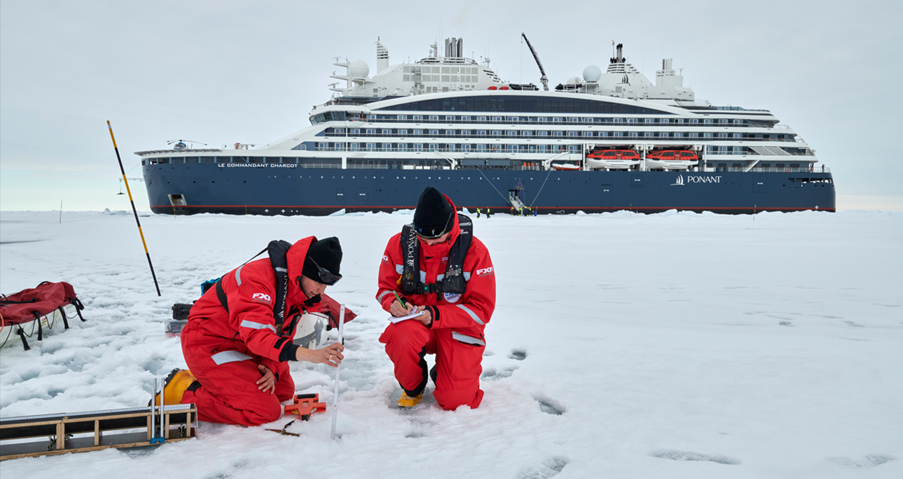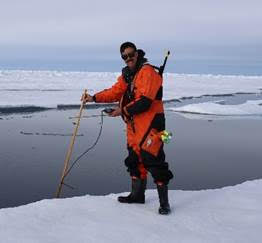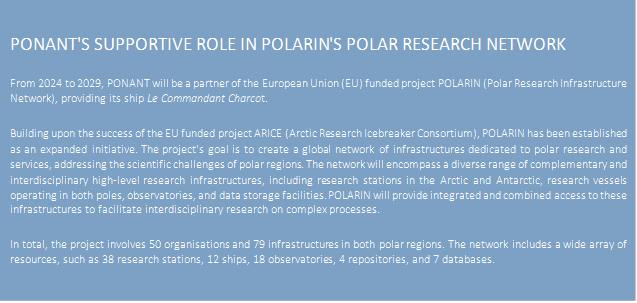
Last summer, scientists from the Alfred Wegener Institute (AWI), Helmholtz Centre for Polar and Marine Research, travelled onboard PONANT’s Le Commandant Charcot to the geographic North Pole. The main objective was to obtain scientific data about the ice thickness. Also, throughout the Arctic season, PONANT supports AWI with a continuous stream of ice thickness data.
Bremerhaven-based Alfred Wegener Institute is a research center, that focusses among other things on observing and better understanding the changes of sea ice in the Arctic, and the consequences on climate, ecosystems, and humans. AWI is a world leader in interdisciplinary Arctic system studies. Their own research icebreaker Polarstern has visited the Arctic nearly every summer for more than 40 years.
With its well-equipped vessel, PONANT offers a platform that allows AWI to improve scientific measurements. Through onboard lectures by the scientific team, PONANT guests get the opportunity to enhance their knowledge and awareness.

PONANT supports AWI in two ways:
- When AWI Scientists are not onboard: When going through the ice, the bow of Le Commandant Charcot is equipped with a Sea Ice Measurement System or SIMS, collecting and sharing data continuously with AWI in Bremerhaven. The PONANT onboard science officer and the naturalists help to obtain other data, and eventually to deploy buoys.
- When AWI Scientists are onboard: Their role is to measure sea ice thickness (with the SIMS) and melt pond coverage (with drones), and to deploy drifting buoys on the sea ice at the North Pole. The drifting buoys obtain sea ice and weather measurements continuously in the months after the visit by the vessel. There is also a cooperation with the Technical University of Hamburg-Harburg, to study the icebreaking performance of Le Commandant Charcot.

Christian Haas is Professor of Sea Ice Geophysics and Remote Sensing at the University of Bremen and is heading the sea ice research group at AWI. He explains the importance of the cooperation with PONANT:
“For us the value is in the repeat explorations of Le Commandant Charcot to the Pole along very similar cruise tracks. Besides our own research vessel Polarstern, Le Commandant Charcot is an alternative vessel in the Arctic.”
“Ice thickness is a crucial indicator of sea ice conditions in the Arctic, reflecting both climate change impacts and the processes behind ice thickness variations, such as melting due to rising temperatures or shifting winds. By measuring ice thickness changes over summer voyages, we can track the monthly ice melt, aiding our understanding of minimum thickness by the end of the melting season in September. This data is essential for improving Arctic Sea ice modelling, prediction, and satellite data validation.”

